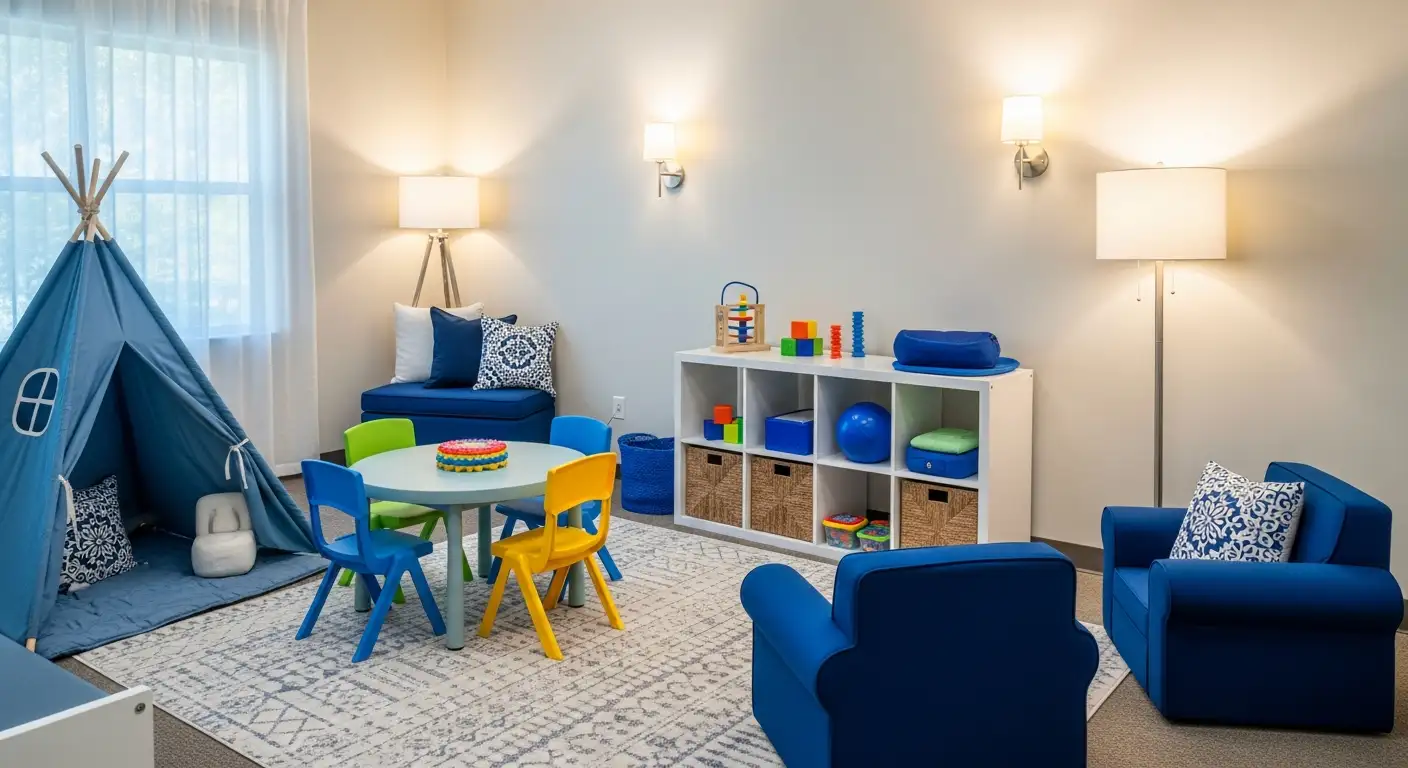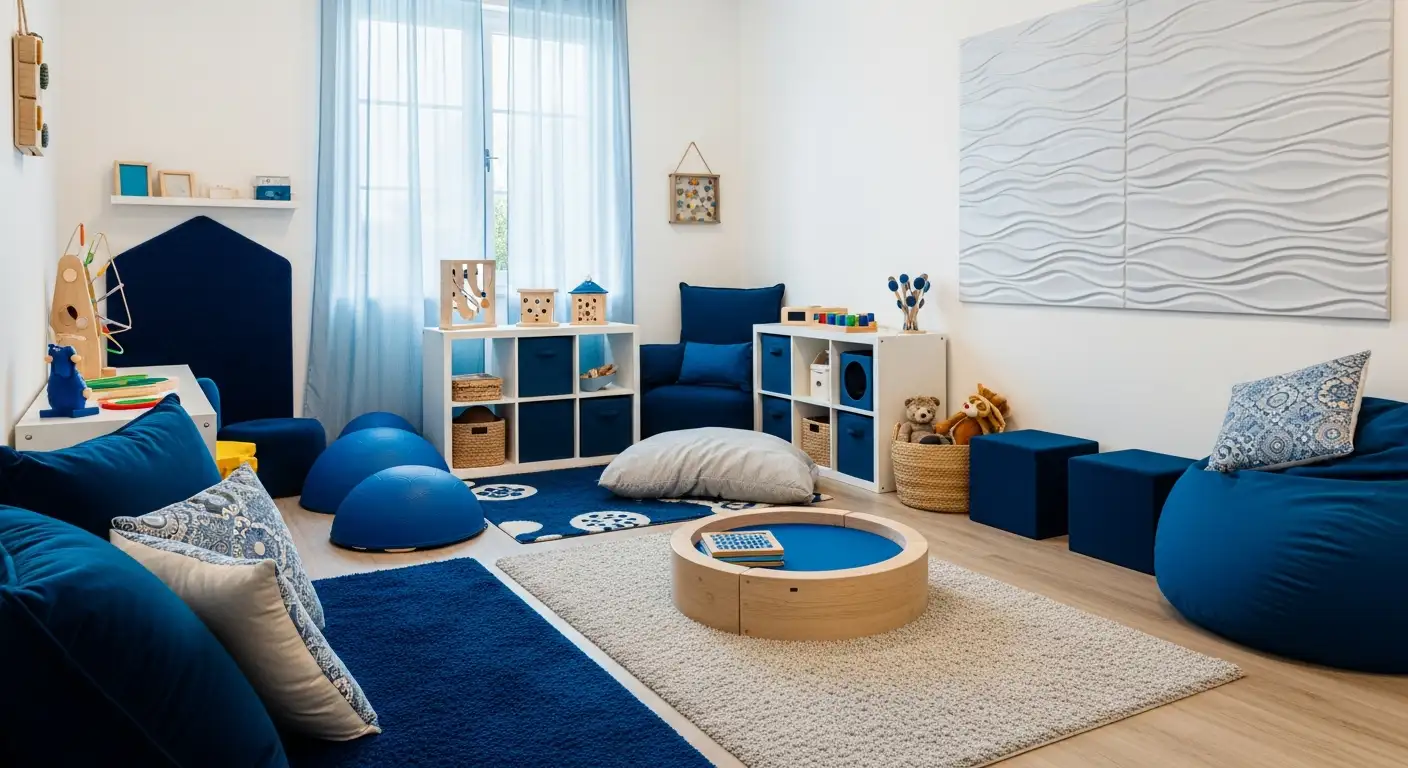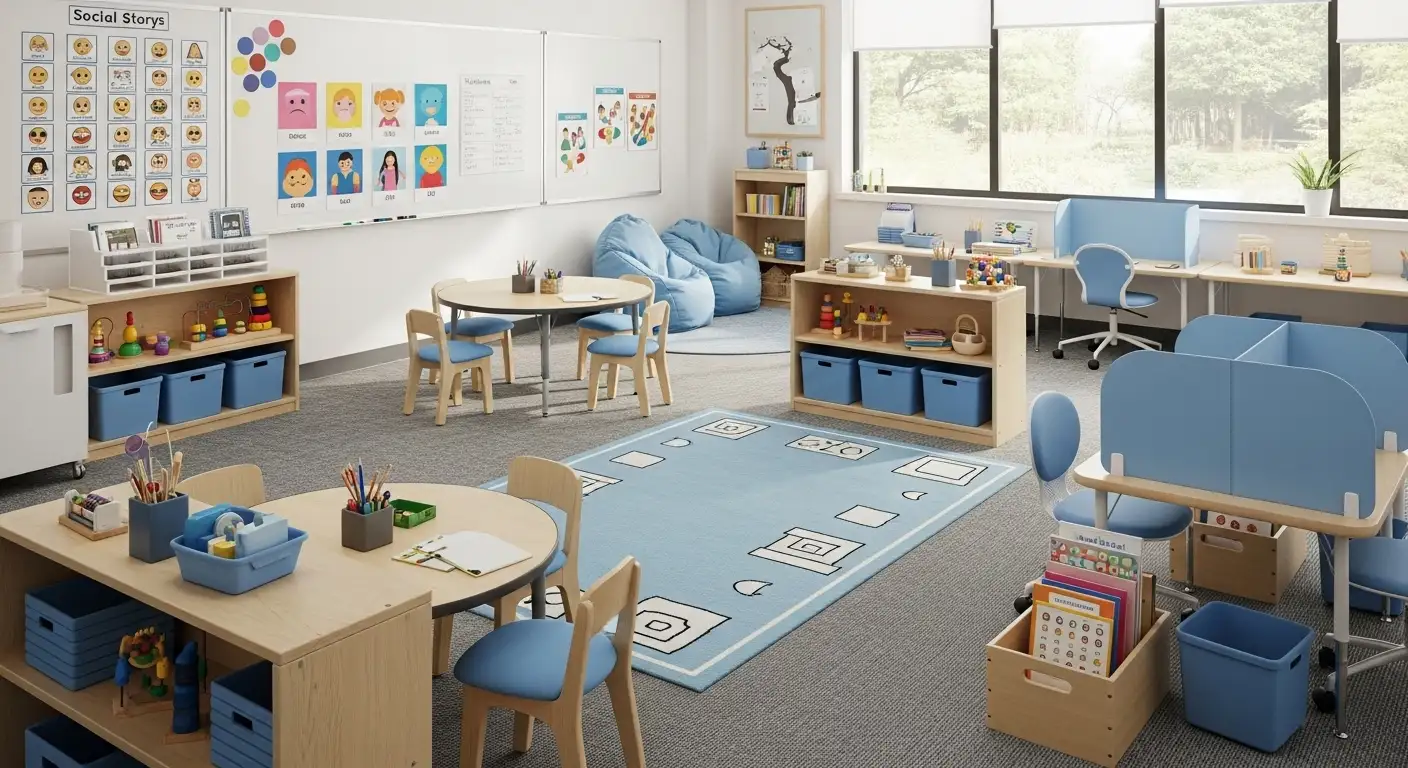How to Manage Autism-Related Behavioral Issues in School
Harnessing Behavioral Science to Support Students with Autism in Educational Settings

Understanding Autism-Related Behavioral Challenges in Schools
Managing behavioral issues related to autism spectrum disorder (ASD) in school environments requires a well-informed, compassionate approach that respects each student’s unique needs. Behavioral challenges such as difficulties with communication, social interaction, and sensory sensitivities can impact learning and classroom dynamics. This article explores how applied behavior analysis (ABA) and other evidence-based behavioral strategies help educators manage these issues effectively, fostering positive social and academic outcomes for students with autism.
What is Applied Behavior Analysis (ABA) and Its Role in Autism Therapy?

Definition of ABA therapy
Applied Behavior Analysis (ABA) therapy is a scientifically supported approach that focuses on understanding how behavior works and is influenced by the environment. It is widely used for autism treatment to improve socially significant behaviors, communication, social skills, and learning abilities.
Principles of learning and behavior in ABA
ABA applies principles such as positive reinforcement to encourage desirable behavior. Key to ABA is analyzing the Antecedent, Behavior, and Consequence (ABC) to guide behavior intervention. This ensures that helpful behaviors increase while harmful or disruptive behaviors decrease.
ABA techniques used in autism treatment
Common ABA methods include Discrete Trial Teaching (breaking skills into simple steps), Naturalistic Teaching (learning through natural routines and interests), and Pivotal Response Treatment (targeting motivation and social initiations). Additionally, token economy systems reward positive behavior with tokens exchangeable for preferred items or activities.
Shift from punitive to positive, naturalistic methods
Over time, ABA has shifted from more rigid and punitive approaches to play-based, individualized, and naturalistic methods. These emphasize joy in learning and promote skill generalization across settings, focusing on strengths and motivation rather than punishment.
Scientific support for ABA's effectiveness
Backed by decades of research, ABA is recognized by authorities like the US Surgeon General as an evidence-based best practice for autism. It has demonstrated effectiveness in enhancing communication, social interaction, and independent living skills, making it a cornerstone in autism intervention programs worldwide.
Who Provides ABA Therapy and How Is It Delivered in School Settings?

Qualified Professionals Involved in ABA Delivery
ABA therapy is primarily delivered by licensed and specially trained professionals. The main provider role belongs to Board Certified Behavior Analysts (BCBAs). These experts design personalized ABA programs by conducting detailed assessments to tailor goals and interventions to each individual’s unique skills and needs.
Roles of Board Certified Behavior Analysts (BCBAs) and Registered Behavior Technicians (RBTs)
While BCBAs create and supervise treatment plans, Registered Behavior Technicians (RBTs) are responsible for implementing the day-to-day therapy sessions. RBTs work under the BCBA’s close supervision to deliver interventions such as positive reinforcement, discrete trial teaching, and token economy systems.
Settings for ABA Therapy Including Schools
ABA therapy is versatile and can be provided in multiple settings. Besides clinics and homes, schools are common environments for therapy, where techniques are integrated into classroom routines to improve social skills, communication, and behavior. In school settings, ABA strategies support both students with autism spectrum disorder and other special needs, as well as general education students facing behavioral challenges.
Family Involvement in Therapy Programs
Family participation is a crucial component of effective ABA therapy. Parents and caregivers often collaborate with practitioners to reinforce skills learned during sessions and maintain consistency across environments. This collaboration ensures interventions are more sustainable and better adjusted to daily life.
Together, this team of qualified professionals and family members provides comprehensive ABA support that is evidence-based, individualized, and adaptable to school environments.
Core ABA Techniques for Managing Behavior in the Classroom
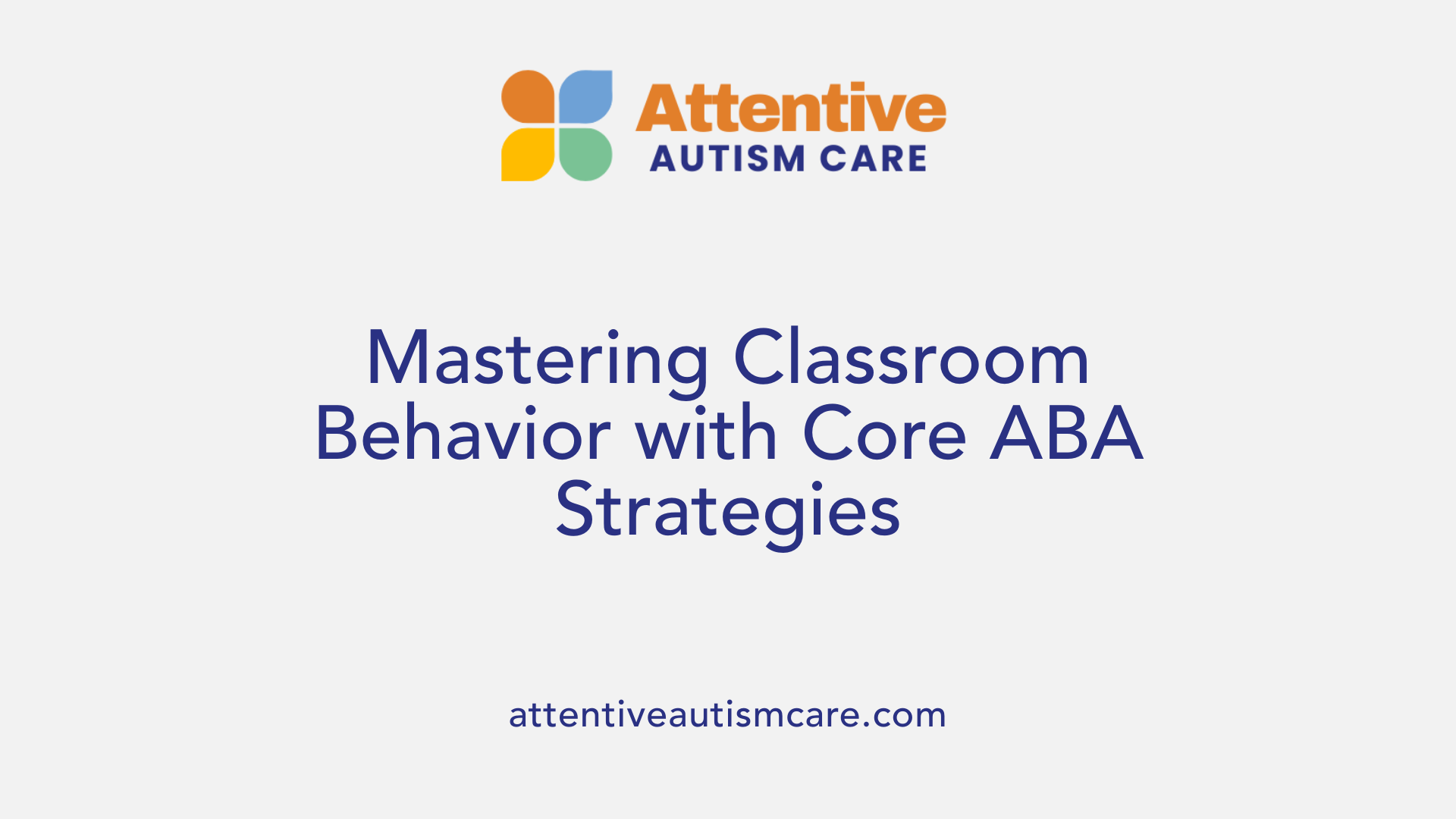
Understanding behavior motivation (Antecedent-Behavior-Consequence)
ABA in classrooms starts with understanding what triggers a behavior (antecedent), the behavior itself, and what happens afterwards (consequence). This ABC model helps teachers identify why behaviors occur and how to encourage positive changes by adjusting the environment or response.
Positive reinforcement strategies
A mainstay of ABA is using positive reinforcement to increase desirable behaviors. Teachers reward students with praise, tokens, or privileges immediately after good behaviors, making those actions more likely to happen again.
Discrete Trial Teaching
This method breaks skills into small, manageable steps. Each step involves a clear cue, the student’s response, and a consequence such as a reward. It’s highly structured and helps students learn complex skills through repetition.
Naturalistic Teaching
Learning happens in familiar, everyday situations here. Teachers use the child’s interests and routines to naturally encourage communication and social skills, making learning more engaging and relevant.
Pivotal Response Treatment
PRT targets broad areas like motivation and social initiations. By improving these pivotal skills, students often show improvement across multiple behaviors, fostering greater independence and social interaction.
Token economy systems
Students earn tokens like stickers or points for demonstrating positive behaviors. These tokens can later be exchanged for rewards, motivating ongoing good conduct and active participation.
Contingent observation (mild timeout)
If disruptive behaviors occur, students may be temporarily moved to observe activities outside the group. This mild timeout reduces aggression and disruption by removing immediate attention to negative behavior while still allowing inclusion shortly after.
These ABA strategies empower teachers to create supportive classrooms where all students, including those with autism or behavioral challenges, thrive through improved behavior and learning outcomes.
Benefits of Behavioral Analysis in Autism Therapy and Classroom Management
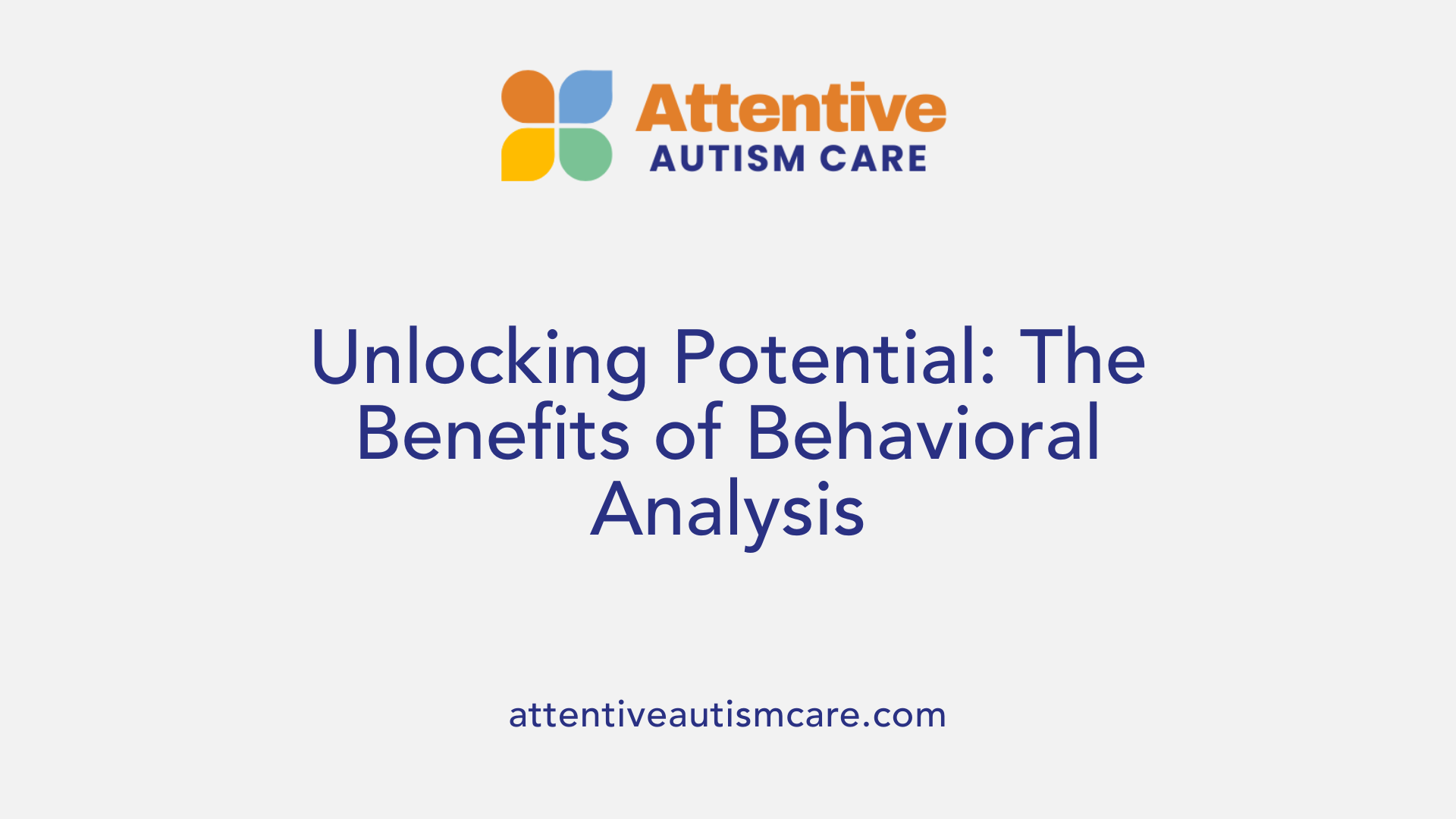
What are the benefits of using behavioral analysis in autism therapy?
Behavioral analysis, especially Applied Behavior Analysis (ABA), offers proven benefits in autism therapy backed by decades of scientific data. Primarily, it enhances communication skills, helping children express needs and engage socially. ABA also fosters social skills and promotes independence in daily living tasks, improving quality of life.
By focusing on positive behaviors and systematically reducing harmful or disruptive behaviors such as aggression or tantrums, ABA creates a safer and more supportive environment for learning and growth. Tailoring interventions to each child's unique needs through detailed assessment and personalized goals maximizes effectiveness.
Early intervention during critical developmental periods, often between ages 2 and 6, leads to better long-term outcomes by leveraging the brain’s adaptability. Frequent data collection and adjustments ensure progress is continuously monitored and goals are met.
In classrooms, ABA techniques like positive reinforcement and token economies encourage appropriate behaviors and improve learning outcomes not just for children with autism, but also for those with other challenges. This structured, individualized, and evidence-based approach empowers children to develop essential skills, increasing their independence and participation in everyday activities.
Integrating ABA-Inspired Strategies into Daily Classroom Routines
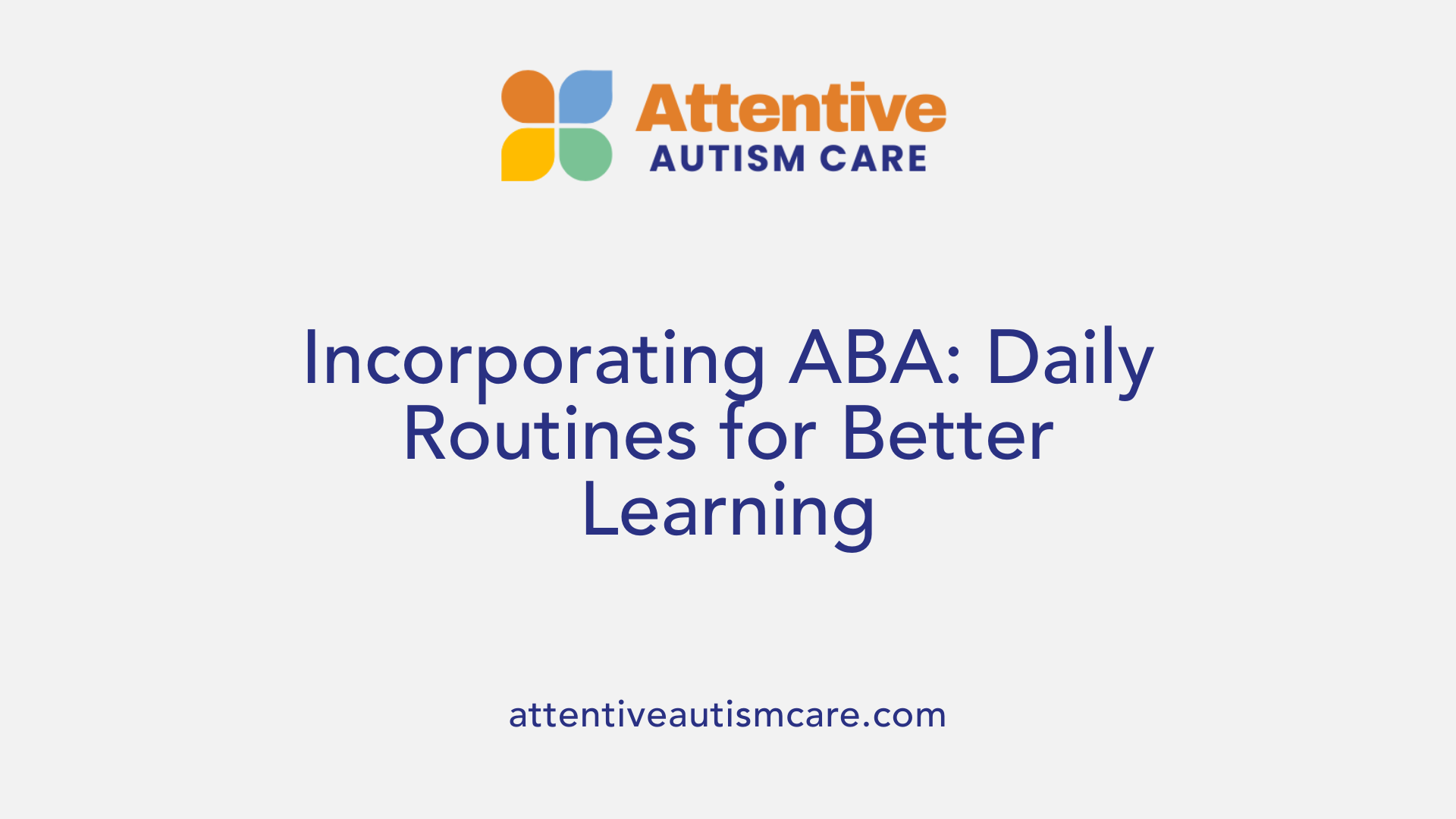
Structured Routines and Visual Supports
Classrooms using ABA-inspired methods implement structured routines and visual aids to help students anticipate daily activities. These supports reduce anxiety, enhance understanding, and create a predictable environment that fosters learning and participation.
Use of Positive Reinforcement and Token Systems
Positive reinforcement remains central to ABA techniques in classrooms. Teachers often use token economy systems, rewarding students with symbols like stickers or points that can be exchanged for preferred items or privileges. This approach motivates appropriate behaviors and improves overall learning outcomes.
Incorporation of Sensory-Friendly Environments and Sensory Integration
To address sensory sensitivities, classrooms may adopt sensory-friendly environments and integrate sensory activities. These adjustments help students with autism or sensory processing challenges remain calm and engaged, enhancing their ability to learn and interact.
Consistency Between Home and School Behavioral Strategies
Effective ABA implementation requires collaboration between families and educators. Ensuring consistency in behavioral interventions across home and school settings maximizes the benefits of therapy and supports skill development and behavior regulation.
Promoting Generalization of Skills Across Settings
ABA-driven programs emphasize the importance of applying learned skills in various environments, beyond the classroom. Strategies like naturalistic teaching encourage students to use communication, social, and functional skills in real-world situations, supporting greater independence and adaptability.
Supplementary Behavioral Approaches Complementing ABA in Schools
What is Social Skills Training (SST) and how is it used in schools?
Social Skills Training (SST) is a behavioral approach often used alongside ABA to enhance social interactions for students, particularly those with autism spectrum disorder. SST employs methods like role-playing, social stories, and group activities to teach appropriate social behaviors. These techniques help students practice and understand social cues, improve communication, and build friendships in a safe, guided setting.
How does Cognitive Behavioral Therapy (CBT) support students in managing anxiety and repetitive behaviors?
Cognitive Behavioral Therapy (CBT) is an effective evidence-based approach used in schools to address anxiety and repetitive behaviors common in students with developmental challenges. CBT helps students by promoting cognitive restructuring—teaching them to recognize and change negative thought patterns—and skill-building to manage emotions. This therapy complements ABA by targeting internal experiences and emotional responses beyond observable behaviors.
What are the advantages of combining ABA with other evidence-based approaches?
Combining ABA with other behavioral therapies like SST and CBT provides a more comprehensive support system for students. While ABA focuses on learning and reinforcing positive behaviors, SST develops social competencies, and CBT addresses emotional regulation and thought patterns. This integrated approach fosters stronger, well-rounded skills essential for academic and personal success.
Why is fostering emotional regulation important alongside behavior management?
Emotional regulation is crucial for helping students manage feelings that could interfere with learning and social interaction. Supporting emotional regulation through therapies like CBT and complementary strategies promotes self-awareness, reduces anxiety and frustration, and enhances a student's ability to engage meaningfully in the classroom. When integrated with traditional ABA methods, it encourages more sustainable behavior improvements.
Tracking Progress and Collaborating with Families for Effective Outcomes
How is progress tracked during ABA therapy sessions?
Progress in ABA therapy is meticulously tracked through systematic data collection during each session. Behavior analysts record specific responses and behaviors to evaluate how a child is advancing toward individualized goals. This detailed tracking allows for objective measurement of skill acquisition and behavior changes over time.
Why is regular review and adjustment of goals important?
Regular review sessions are critical to ensure that ABA program goals remain relevant and effective. As a child grows and their skills develop, behavior analysts adjust teaching plans to reflect new challenges and areas for growth. This dynamic process helps maintain therapy effectiveness and ensures that goals meet the child's evolving needs.
How does communication and collaboration with families enhance ABA outcomes?
Strong collaboration between therapists and families is essential for successful ABA therapy. Open communication ensures that goals are meaningful and consistent with what is expected at home, fostering a cohesive learning environment. Families can provide valuable insights into the child's preferences and challenges outside therapy, which guides personalized intervention planning.
How are individualized goals tailored to reflect home and school environments?
ABA programs are custom-designed to address skills and behaviors that are important both at home and at school. By incorporating strategies applicable across environments, children benefit from consistent support. This approach promotes generalization, helping children apply learned skills in varied contexts.
What should families consider when selecting providers and verifying insurance?
Families are advised to choose qualified providers, preferably those with Board Certified Behavior Analysts (BCBA), ensuring expert oversight. Verifying insurance coverage ahead of time is also vital since many plans cover ABA when deemed medically necessary. Asking detailed questions about staff qualifications, safety measures, therapy goals, and how progress is evaluated can help families find the best fit for their child's needs.
Preparing Educators to Support Students with Autism Using ABA
Teachers’ Roles in Implementing ABA Techniques
Teachers play a vital role in applying ABA methods to support students with autism in the classroom. Their responsibilities include understanding why behaviors occur, delivering timely reinforcement and consequences, and adapting teaching methods to the student's needs. By recognizing behavior motivations, teachers can promote positive behaviors and skill development tailored to each student.
Training in Reinforcement and Behavior Motivation
Effective ABA implementation requires teachers to be trained in principles of reinforcement and behavior motivation. Positive reinforcement is a core strategy, where teachers reward desirable behaviors, making them more likely to be repeated. Training also covers analyzing antecedents and consequences – understanding what triggers behaviors and what outcomes follow – enabling educators to shape behaviors intentionally.
Modifying Classroom Environments for Positive Behavior
ABA encourages modification of the classroom environment to reduce triggers for challenging behavior and increase opportunities for learning. Simple changes, such as clear structure, visual supports, and sensory-friendly areas, help students with autism feel secure and focused. Creating predictable routines and minimizing distractions supports emotional regulation and engagement.
Using Token Economies and Contingent Observation Effectively
Token economy systems are valuable tools where students earn tokens like stickers or points for positive behavior, which they exchange for rewards. This method motivates students and reinforces good behavior consistently. Contingent observation serves as a mild timeout technique, where a child temporarily observes rather than participates following disruptive acts, helping reduce aggression and disruptions without harsh punishment.
Encouraging Peer Understanding and Inclusive Classrooms
Beyond individual behavior management, teachers foster peer understanding and inclusion. Educators can facilitate social skills development and awareness through naturalistic teaching and social stories, promoting empathy and cooperation. Building an inclusive environment helps all students feel accepted and supports their social and emotional growth.
These ABA-informed strategies empower educators to create structured, supportive, and inclusive classrooms that promote learning and positive behaviors for students with autism.
Building Supportive Learning Environments for Students with Autism
Effectively managing autism-related behavioral issues in schools hinges on a combination of science-based therapies like Applied Behavior Analysis and collaboration among educators, families, and clinicians. ABA provides a flexible framework to understand behavior, teach critical skills, and promote positive change through individualized strategies. When integrated thoughtfully with supplementary approaches and consistent partnerships, these methods empower students with autism to thrive academically, socially, and emotionally in school settings. With growing awareness and training, educators can create inclusive classrooms that nurture the full potential of every learner.















